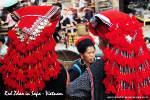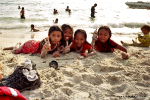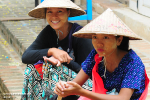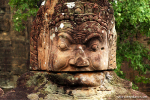Cambodia is a captivating Southeast Asian nation renowned for its ancient Khmer temples, vibrant cities, and warm hospitality. From the awe-inspiring Angkor Wat complex to the bustling capital Phnom Penh, riverfront villages along the Mekong, and breezy beach towns like Sihanoukville - this compact country offers a wealth of experiences for culture lovers and outdoor enthusiasts alike. Our expert travel guide uncovers the top things to do in Cambodia, highlighting iconic landmarks, off-the-beaten-path gems, delectable cuisine, and diverse natural wonders. Whether you seek to wander among sprawling archeological parks, soak in colonial-era charm, discover forgotten temples shrouded by jungles, or simply lounge on sugar-sand beaches - Cambodia promises an unforgettable journey steeped in ancient heritage and incredible natural beauty.
Marvel at the Majestic Angkor Temples
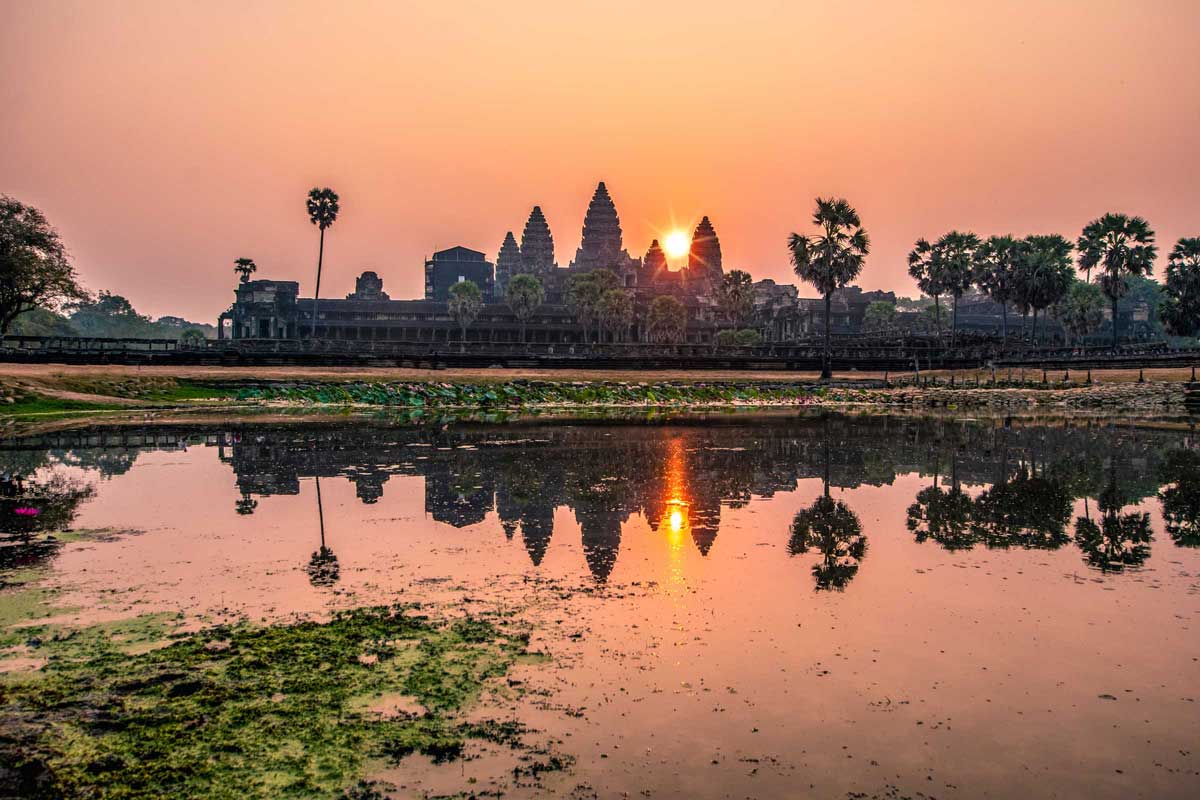
Exploring the ancient temples of Angkor is an absolute must for any visitor to Cambodia. This vast archeological park, once the capital of the powerful Khmer Empire, contains some of the most impressive religious monuments ever constructed by human hands.
As you wander through the jungle-enveloped ruins, you can't help but be awestruck by the sheer grandeur and artistry of temples like Angkor Wat. This 12th century masterpiece is the largest religious building on the planet and a staggering feat of architectural genius. Watching the sunrise over its iconic lotus-shaped towers bathed in warm golden light is a moment you'll never forget.
Other highlights include the intricately carved Banteay Srei with its exquisite reliefs depicting scenes from Hindu mythology. The haunting Ta Prohm, eerily swallowed by colossal tree roots, evokes a mystical, almost supernatural ambiance. And the multi-faced Bayon temple, with its myriad carved stone portraits, is a mesmerizing puzzle of symbolism.
But Angkor is more than just individual temples - it's an entire ancient city complex waiting to be explored. Wander trails connecting the monuments through dense jungle. Discover crumbling libraries, royal baths, and incomprehensibly vast reservoirs and canals. Let your imagination wander as you ponder the heights of culture and engineering achieved by the Khmer civilization at its peak.
With each temple uniquely captivating, plot your visit carefully to savor the diversity. And no matter how crowded Angkor gets, find moments of pure tranquility by visiting at less busy times. This once-in-a-lifetime opportunity to immerse yourself in an ancient, sprawling city is what dreams are made of for history and culture buffs alike.
Angkor Wat is an absolute must-see attractions when visiting Siem Reap. As the largest religious monument in the world, it’s an iconic temple complex that captivates visitors with its grandeur and historical significance. Skipping Angkor Wat would be a missed opportunity for anyone exploring Cambodia
Essential Information for tourists visiting Angkor Wat:
- Location:Angkor Wat is located in Siem Reap, Cambodia.
- Records: Angkor Wat is the world's largest religious monument, originally built as a Hindu temple in the 12th century. The Angkor temples complex covers over 400 acres (160 hectares).
- Getting There: Siem Reap has an international airport with connections to major cities in Southeast Asia and beyond. Taxis and tuk-tuks are readily available to take you to the Angkor Wat complex.
- Entrance Fees: A one-day Angkor pass costs $37 USD, a three-day pass costs $62 USD, and a seven-day pass costs $72 USD. Tickets can be purchased online or at the entrance gate.
- Dress Code: While there's no strict dress code, it is respectful to cover your knees and shoulders when visiting temples. This is especially important if you want to enter some of the inner sanctums.
- Best Time to Visit: The dry season (November to April) is generally considered the best time to visit Angkor Wat, with pleasant temperatures and less rain. However, this is also the peak tourist season, so expect crowds. The wet season (May to October) can be hot and humid, but there are far fewer tourists.
- Temple Etiquette: Be respectful of the religious significance of the temples. Remove your shoes before entering any building, and avoid speaking loudly or making gestures that could be considered offensive.
Explore Captivating Phnom Penh
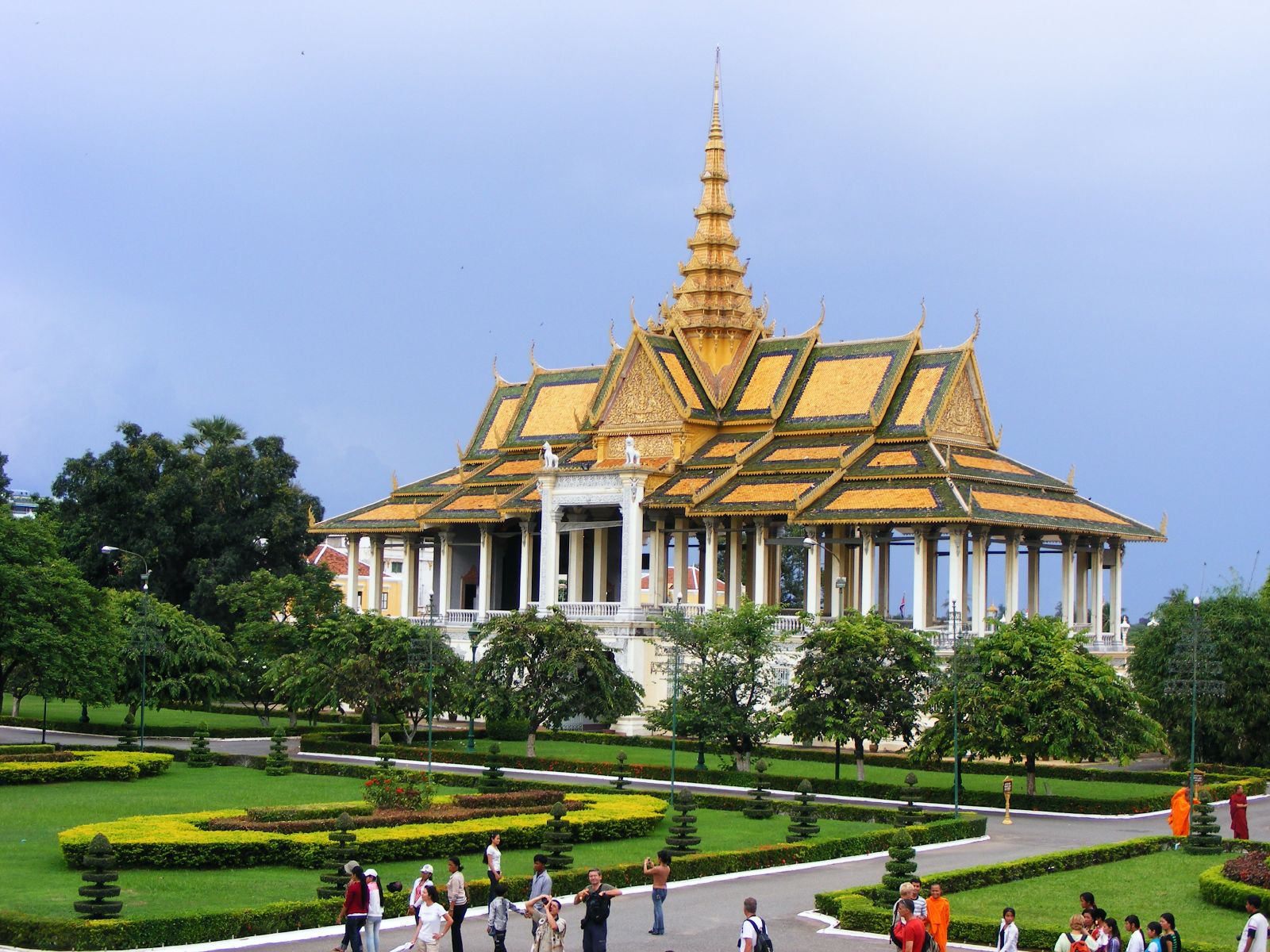
No trip to Cambodia is complete without experiencing the frenetic energy and fascinating contrasts of its capital, Phnom Penh. This city pulses with a unique blend of cosmopolitan vibes and profound historical weight.
Start your Phnom Penh adventure by losing yourself in the atmospheric old quarter. Wander the riverfront promenade lined with mustard-colored French colonial buildings housing stylish cafes and bars. Duck into Bassac Lane's vibrant alleyways, overflowing with trendy holes-in-the-wall perfect for happy hour and people-watching.
Then immerse yourself in Khmer culture at the dazzling Royal Palace complex. Marvel at the Silver Pagoda's emerald-tiled floors and bejeweled Buddha statues. Witness saffron-robed monks gliding serenely through manicured gardens. This is the heart of ancient customs coexisting with modern city life.
But Phnom Penh's turbulent past also demands a sobering visit. The haunting Tuol Sleng Genocide Museum, a former Khmer Rouge prison, and the Killing Fields of Choeung Ek memorial are brutal reminders of the nation's darkest hours under the Pol Pot regime. While difficult, coming face-to-face with this atrocity provides essential perspective.
For a more uplifting experience, embrace Phnom Penh's renowned energy at the sprawling Russian Market. Haggle with vendors hawking glittering jewelry, vibrant silk textiles, woodcarvings and handicrafts amid a kaleidoscope of colors and commotion. Sip sugarcane juice from a street cart and sample the city's incredible street food like johk noodles.
Whether wandering serene palace gardens or pulsing night markets, Phnom Penh awakens all the senses. This is a city that has risen defiantly from the ashes, fusing rich history and modern verve into an endlessly fascinating destination.
Essential Information for tourists visiting Phnom Penh:
- Location: Phnom Penh is the capital and largest city of Cambodia. It's situated at the confluence of the Mekong, Bassac, and Tonle Sap rivers in the south-central part of the country.
- Getting There: Phnom Penh International Airport (PNH) is the main gateway to the city. Several airlines offer flights from major cities worldwide.
- Accommodation: Phnom Penh offers a wide range of accommodations, from budget guesthouses to luxury hotels.
- Things to Do:Phnom Penh is a fascinating city with a rich history and culture. Must-see attractions include the Royal Palace, Silver Pagoda, National Museum, Tuol Sleng Genocide Museum, and the Killing Fields. Be sure to explore the city's vibrant markets, such as Phsar Thmei (Central Market), and take a stroll along the scenic Sisowath Quay.
- Recommended durations: You can see most of the major sights in Phnom Penh in 2-3 days. However, if you want to experience the city's culture and nightlife, you may want to stay for a longer period.
- Best time to visit: The dry season (November to April) is generally considered the best time to visit Phnom Penh, as the weather is cooler and there is less rain. However, the city can be quite crowded during this time. The shoulder seasons (May and June, September and October) can also be a good time to visit, as the weather is still pleasant and there are fewer crowds.
Cruise the Mighty Mekong River
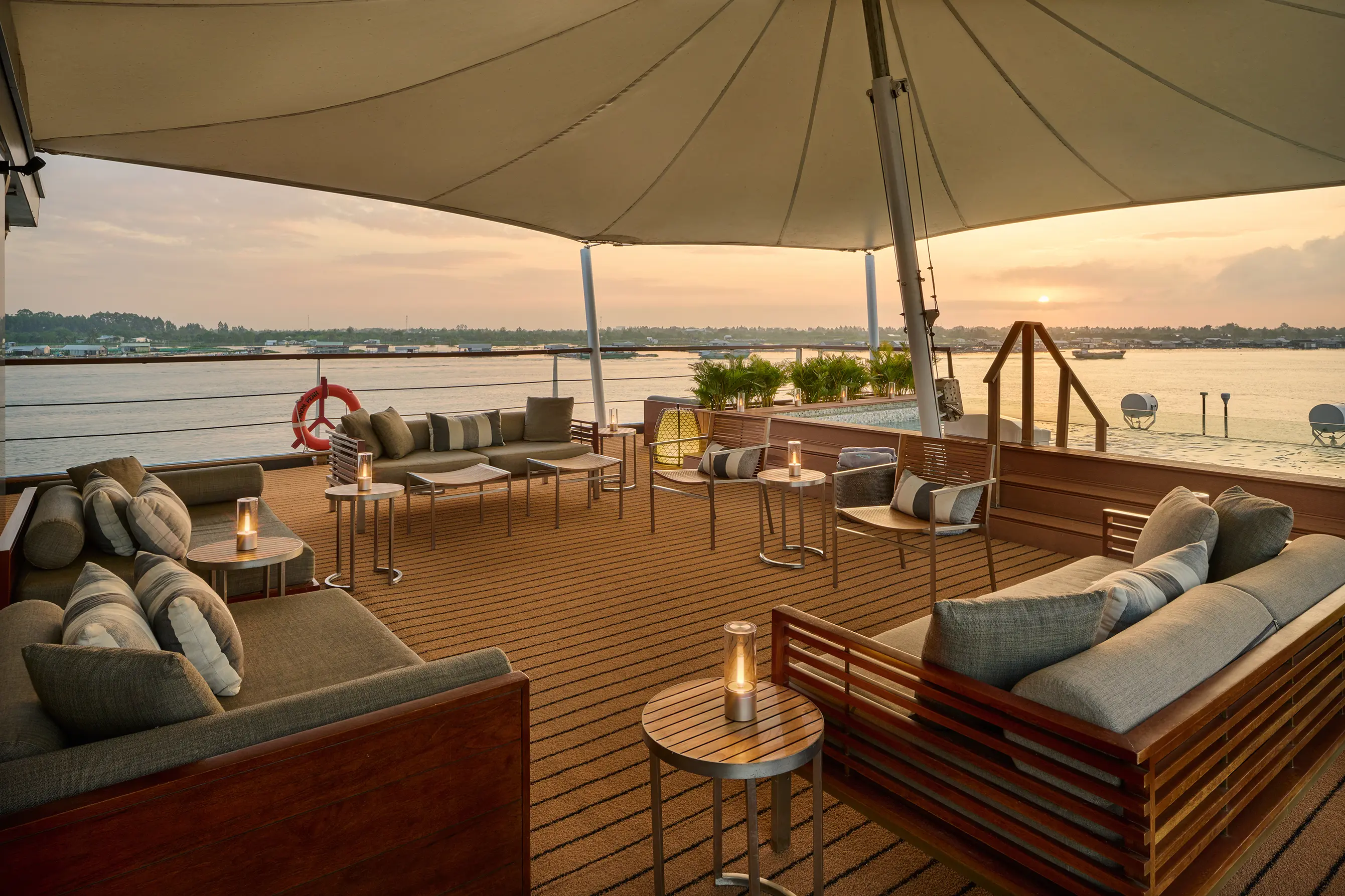
For an unforgettable journey through the heart of Southeast Asia, take to the waters of the mighty Mekong River. A cruise along this legendary waterway offers the opportunity to experience the rich heritage and diverse cultures of both Cambodia and Vietnam in one seamless adventure.
Setting sail from Siem Reap, you'll glide past scenes of rural village life unchanged for centuries - bamboo stilted homes, fishermen casting nets, and children frolicking along the banks. Stop to explore charming harbor towns and vibrant floating markets, where vendors sell ripe tropical fruits and fragrant herbs from their wooden boats.
Your river odyssey seamlessly blends moments of cultural immersion with ample time to relax and revel in the picturesque landscapes gliding by. Visit rural communities to learn about traditional crafts like silk weaving and silver smithing. Disembark to wander among the ancient temples of Angkor, a breathtaking UNESCO World Heritage site.
As you cruise towards Vietnam's Mekong Delta, be awed by the evolving scenery - from emerald rice paddies to mangrove forests teeming with life. In cities like Phnom Penh, go beyond the tourist trail with guided excursions to vibrant markets, ornate palaces and solemn killing fields that reveal the nation's turbulent past.
Onboard, discover the luxuries of river life with exceptional service, delicious regional cuisine, and thoughtful amenities. Savor a sundowner from the top deck as the sun slips behind the lush riverbanks. At night, enjoy cultural performances or just gaze out at the twinkling lights of riverside villages.
This isn't just a cruise, but an all-encompassing journey to the cultural heartlands of two captivating nations. Combine the romantic indulgence of a river voyage with authentic experiences that immerse you in the mighty Mekong's living heritage.
Mekong River Cruises Cambodia to Vietnam:
- Destination: Cambodia and Vietnam
- Cruise Itinerary: Most cruises travel downstream, starting in Cambodia (often Siem Reap) and ending in Vietnam (often Ho Chi Minh City). Some cruises may travel upstream.
- Durations: Mekong River cruise lengths vary from one-night tasters to immersive 7-10 night voyages. Popular routes sail from Siem Reap to Phnom Penh, or extend further to Ho Chi Minh City. While onboard, guests can disembark for excursions to traditional Mekong Delta villages, especially on longer cruises. These leisurely cultural journeys appeal more to couples than families with young children who may get restless. Overall, they offer an unhurried way to experience the region's rich heritage.
- When to travel: We recommend cruising on the Mekong between November and February. After February, up until April, the water level is too low around Siem Reap to allow boats to travel, so we do not recommend cruising at this time.
- Activities: Explore temples, villages, floating markets, and scenic landscapes along the Mekong River. Enjoy cultural performances, onboard amenities, and day trips.
- Price: Prices vary depending on the cruise line, itinerary, and amenities. However, you can anticipate a price range between $1,000 and $10,000 per person for a mekong river cruise trip.
- Visa requirements for Cambodia and Vietnam: Visa requirements vary depending on your nationality. Check the Vietnam Visa Requirements and Cambodia Entry Requirements for the latest information.
- Weather: Cambodia and Vietnam have a tropical climate with hot, humid weather year-round. The rainy season is from May to October.
Unwind on Sihanoukville's Beaches
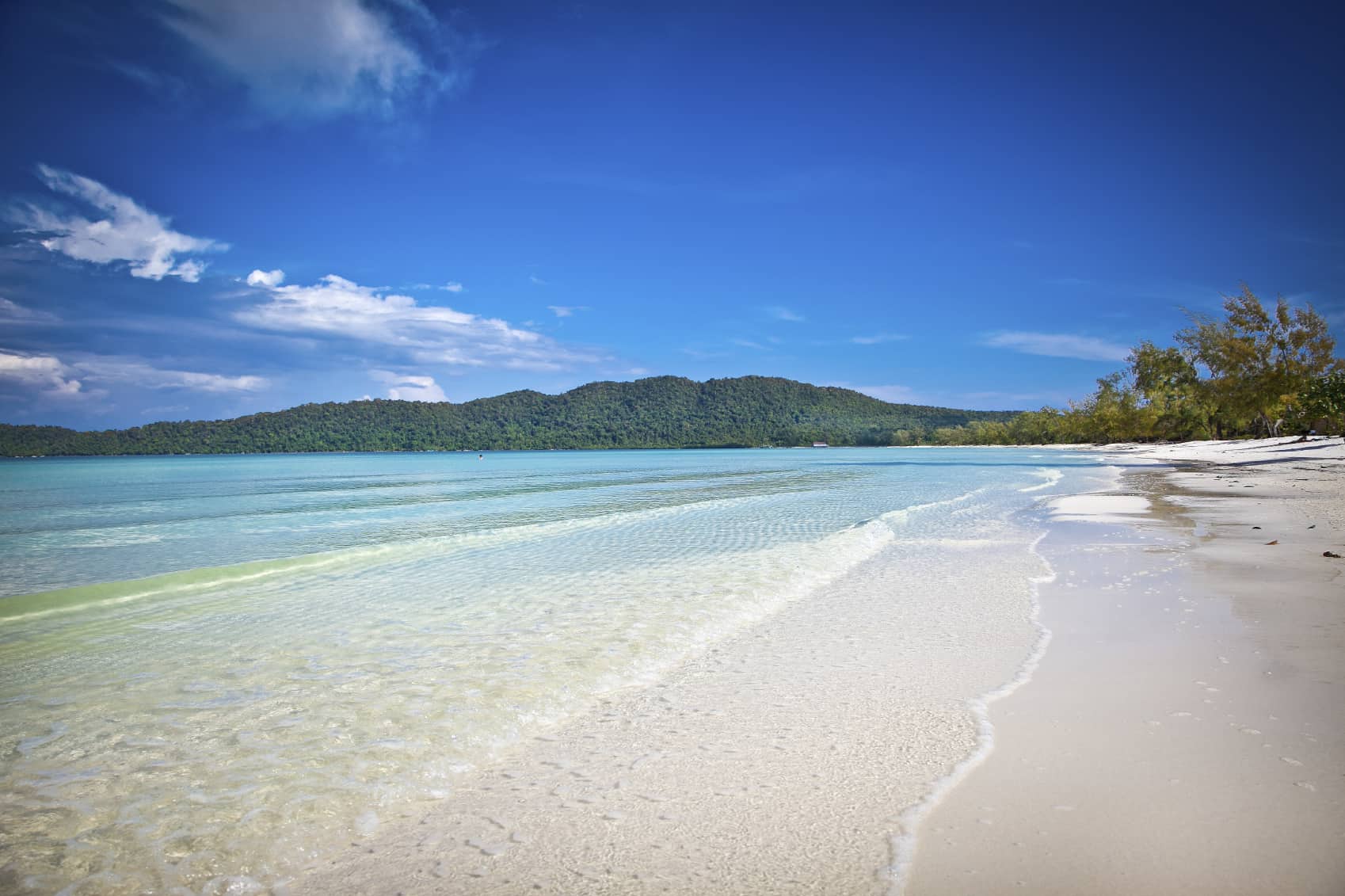
When it's time to trade Cambodia's ancient temples for sun-drenched relaxation, make your way to the blissful beaches around Sihanoukville. This coastal region offers a contrasting rhythm to the cultural heartlands - lazy days slipping into fiery sunsets over the Gulf of Thailand.
The true jewels here are the unspoiled islands just offshore. Hop a ferry from Sihanoukville to reach the palm-studded paradise of Koh Rong. On its longest stretch of sand, the aptly named 7km Long Beach, you'll find pockets still blissfully undeveloped. The water shimmers in shades of electric blue, enticing you to dive in or simply sprawl out on the velvety whiteshore.
Those seeking a more serene escape can continue on to Koh Rong Samloem. This petite island has a delightfully laid-back vibe, with just a sprinkling of family-run bungalow resorts dotting its beaches like Sunset Beach and Lazy Beach. Fall into a deliciously idle routine of swimming in tranquil bays, beachcombing for shells, and indulging in fresh-caught seafood at casual waterfront eateries.
Back on the mainland, lively Sihanoukville offers more of a party atmosphere, especially at Ochheuteal and Serendipity beaches. Here you'll find lively luxury scenes and nightlife. But pockets of quieter resorts and bungalows can still be discovered tucked away from the crowds.
However you craft your perfect beachy getaway - whether luxuriating in total seclusion or carefreely mingling with fellow sun-worshippers - Cambodia's idyllic islands and coastlines won't disappoint. Let the gently swaying palms and hypnotic waves lapping the sugar-sand reset your travel-weary soul.
Sihanoukville boasts a long coastline with a variety of beaches to suit every kind of traveler.
- Beach Variety: Sihanoukville offers a range of beaches, from lively and developed (like Serendipity and Ochheuteal Beach) to more secluded and pristine (like Otres and Independence Beach).
- Activities: You can find everything from swimming, sunbathing, and watersports (jet skiing, kayaking, diving) to beachside dining and nightlife, depending on the beach you choose.
- Best time to visit: The dry season (November to April) is generally considered the best time to visit Sihanoukville, with sunny skies and calm seas.
- Things to do in Sihanoukville: Relax on the beach, explore nearby islands like Koh Rong and Koh Rong Samloem, visit the Kbal Chhay Waterfalls, explore the Otres Market, or take a boat trip to bioluminescent plankton at night.
Off-the-Beaten-Path Wonders

While Cambodia's iconic Angkor Wat and buzzing Phnom Penh deservedly attract many visitors, the Kingdom's off-the-radar gems await those willing to veer from well-trodden paths. From sleepy riverside towns to remote ethnic villages, these are the hidden treasures that reveal another side of this captivating nation.
In Kampong Cham, you'll find a delightfully laid-back vibe contrasting the capital along the mighty Mekong River. Don't miss the monumental Phnom Pros and Phnom Srei temples on dueling hillsides. Farther east, Banteay Chhmar offers an astounding Angkor alternative - jaw-dropping carved temples consumed by strangler fig trees without the crowds.
For an escape into nature, head to the Cardamom Mountains' Kirirom National Park, a pine-scented jungle playground. In Kratie province, rare freshwater dolphins frolic in opportune Mekong River pools, best seen at sunset. Kampong Thom lures with its pre-Angkorian ruins like Sambor Prei Kuk, while Battambang charms as Cambodia's artistic capital.
The provinces harbor other surprises too - Kampong Chhnang's thriving pottery trade, Takeo's glimpse into rural rice cultivation, and Kep's delightfully ramshackle seafront lined with legendary crab markets. For beach bliss without crowds, offshore Koh Tonsay delivers. Venture to Cambodia's wild northeastern reaches in Mondulkiri and Ratanakiri for elephant encounters and ethnic minority village homestays.
So for a richer sense of Cambodia's cultural tapestry and natural splendor, peel away from the obvious sights. These off-the-beaten-track destinations, steeped in local lifestyles and traditions, ensure a truly immersive, unforgettable adventure.
In addition to Angkor Wat and Phnom Penh, which are must-see places when traveling to Cambodia, Cambodia also has many hidden gems worth exploring.
Here are 12 of the best Off-the-Beaten-Track Places in Cambodia:
- Kampong Cham
- Banteay Chhmar
- Kirirom National Park
- Kratie
- Kampong Thom
- Tatai Leu & Koh Kong
- Battambang
- Kampong Chhnang
- Takeo
- Kampot
- Kep & Koh Tonsay
- Mondulkiri & Ratanakiri
Top National Parks & Natural Attractions
When people think of Cambodia, the first thing that often comes to mind is the magnificent Angkor Wat. While this iconic temple complex is undoubtedly a must-visit, Cambodia has much more to offer, especially for nature enthusiasts. The country's national parks and natural attractions provide a stunning array of landscapes and wildlife, perfect for those seeking adventure and tranquility.
One of the top things to do in Cambodia is exploring its lush national parks. These protected areas are rich in biodiversity and offer a unique glimpse into the natural beauty of the region. Whether you're trekking through dense jungles, spotting rare wildlife, or simply enjoying the serene environment, Cambodia's national parks have something for everyone.
Botum Sakor National Park, the largest national park in Cambodia, is a paradise for wildlife lovers. Covering over 1,700 square kilometers, it's home to elephants, gibbons, and various bird species. The park's diverse ecosystems, including coastal mangroves and lowland forests, make it a fascinating destination for eco-tourism.
Ream National Park, located near Sihanoukville, combines the best of both worlds with its stunning coastline and dense forests. Visitors can explore the mangrove forests, take a boat trip along the Prek Teuk Sap River, or relax on the pristine beaches. The park is also a great spot for bird-watching, with over 150 bird species recorded.
For those who love hiking, Virachey National Park in northeastern Cambodia offers some of the best trekking experiences. The park's remote location means it is less visited, providing an authentic wilderness experience. Trekkers can explore the park's mountains, rivers, and waterfalls while keeping an eye out for the elusive clouded leopard or sun bear.
Kirirom National Park, just a few hours' drive from Phnom Penh, is known for its pine forests and cooler climate. It's a favorite among locals for weekend getaways and picnics. The park offers several trails leading to scenic waterfalls and viewpoints, making it a perfect spot for a day trip.
Phnom Kulen National Park is not only a natural wonder but also a historical site. Considered the birthplace of the Khmer Empire, the park is dotted with ancient ruins and carvings. The Kulen Waterfall is a highlight, offering a refreshing break after exploring the park's cultural treasures.
These parks showcase Cambodia's commitment to preserving its natural heritage and offer visitors a chance to experience the country's rich biodiversity and stunning landscapes. Whether you're an avid trekker, a wildlife enthusiast, or someone looking to escape the hustle and bustle of city life, Cambodia's national parks provide the perfect retreat.
List of Most National Parks in Cambodia
- Bokor National Park
- Botum Sakor National Park
- Phnom Kulen National Park
- Keo Seima Wildlife Sanctuary
- Kep National Park
- Kirirom National Park
- Peam Krasaop Wildlife Sanctuary
- Phnom Aural Wildlife Sanctuary
- Virachey National Park
- Southern Cardamoms National Park
Wildlife and birdwatching in Cambodia
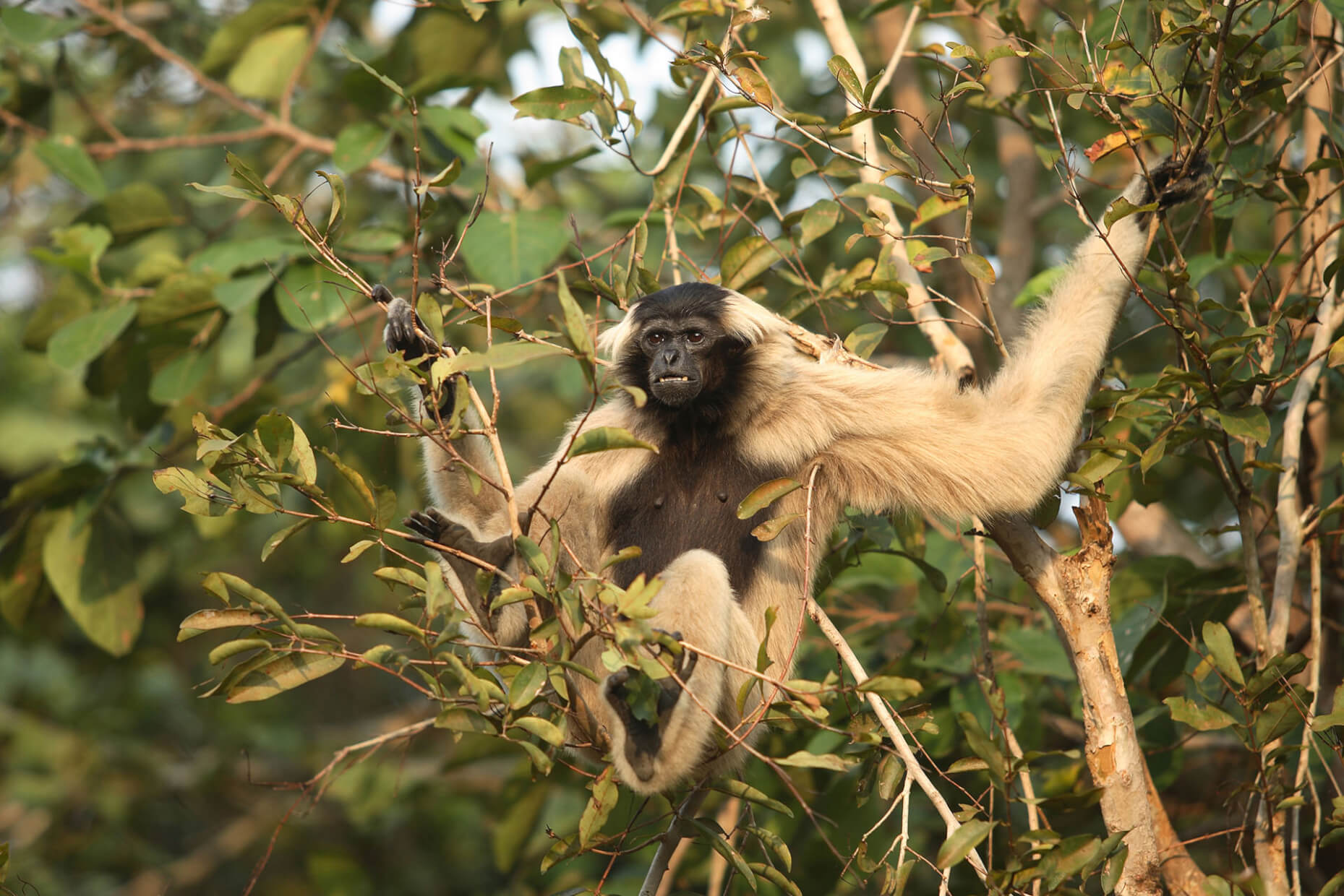
Exploring the natural wonders of Cambodia should be high on your list if you’re a nature enthusiast. Among the top activities to consider is wildlife and birdwatching, which offer incredible opportunities to experience the country's rich biodiversity.
One of the premier destinations for birdwatching in Cambodia is the Prek Toal Biosphere, located on the northwestern shore of the Tonlé Sap Lake. This sanctuary is often heralded as one of Southeast Asia's top birdwatching spots, thanks to its impressive array of rare and endangered bird species. Accessible by boat from Siem Reap, a visit to Prek Toal allows you to witness majestic birds such as the spot-billed pelican, the greater adjutant, and the milky stork in their natural habitat.
For those looking to delve deeper into Cambodia's wildlife, the provinces of Rattanakiri and Mondulkiri offer a treasure trove of experiences. These regions are still relatively untouched and boast vast protected areas that are perfect for eco-tourism and trekking. In Rattanakiri, you can explore the Lumphat Wildlife Sanctuary and Virachey National Park, both of which are havens for various wildlife species. The chance to spot gibbons swinging through the trees or to trek alongside elephants in Mondulkiri makes for an unforgettable adventure.
The Cambodian Ministry of Tourism is actively promoting these regions as eco-tourism hotspots. Their efforts aim to not only boost tourism but also to ensure the protection of the country’s unique wildlife. Almost half of Rattanakiri has been designated a protected area, underscoring Cambodia’s commitment to conservation and sustainable tourism.
Whether you're kayaking through the flooded forests of Tonlé Sap, hiking through dense jungles in Rattanakiri, or enjoying the serene landscapes of Mondulkiri, wildlife and birdwatching in Cambodia provide an intimate glimpse into the natural beauty of this Southeast Asian gem.
Top places for wildlife and birdwatching in Cambodia:
- Prek Toal Biosphere Reserve
- Mondulkiri (for elephant experiences)
- Rattanakiri (for gibbon spotting)
- Tonle Sap Lake
- Lumphat Wildlife Sanctuary
- Virachey National Park
Mouthwatering Cambodian Cuisine
When visiting Cambodia, one of the absolute must-do activities is diving into the mouthwatering Cambodian cuisine. This vibrant and flavorful food scene is a major draw for travelers from around the world, offering a unique taste of the country's rich culinary heritage. Cambodian cuisine, often referred to as the 'cuisine of contrasts,' features an exciting blend of flavors, textures, and ingredients that are sure to captivate your taste buds.
A typical Cambodian meal centers around rice and fish, with an array of other ingredients that bring depth and diversity to the dishes. One iconic dish you must try is Fish Amok, a delicately steamed coconut fish curry served in banana leaves. Another favorite is Samlor Machu Trey, a delightful sweet and sour soup with fish, which perfectly balances tangy and savory flavors. Nom Banh Chok, known as Khmer noodles, is a beloved breakfast dish featuring fresh noodles topped with a green fish gravy and an array of fresh herbs and vegetables. For something a bit different, try Num Anksom Sach Chrouk, a sticky rice cake filled with pork, offering a delicious blend of sweet and savory.
Seafood lovers will find themselves in paradise in Cambodia, with its extensive coastline and rich inland waters providing a bounty of fresh seafood. From grilled fish to succulent prawns and crabs, the seafood offerings are abundant and incredibly fresh.
Unlike its more internationally renowned neighbors, Thailand and Vietnam, Cambodia’s culinary scene remains somewhat of a hidden gem. Yet, Khmer cuisine stands out with its distinctive flavors and wide variety of national dishes. For those eager to delve deeper into the local food culture, taking a cooking class is a fantastic option. Not only will you learn to create authentic Cambodian dishes, but you'll also gain insight into local ingredients like teuk trey (fish sauce) and prahok (fermented fish paste). Cooking courses are widely available in major cities such as Phnom Penh, Siem Reap, Battambang, and Kampot, making it easy to bring a taste of Cambodia back to your own kitchen.
- Fish Amok
- Samlor Machu Trey
- Nom Banh Chok
- Num Anksom Sach Chrouk
- Lok Lak (stir-fried marinated beef)
- Bai Sach Chrouk (grilled pork with rice)
Top Cambodian street foods to try:
- Grilled seafood (fish, prawns, squid)
- Kuy Teav (noodle soup)
- Cha Houy Teuk (jelly dessert)
- Ang Dtray-Meuk (grilled squid)
- Lort Cha (stir-fried short noodles)
- Num Pang (Cambodian sandwich)
In conclusion, Cambodia is a treasure trove of unforgettable experiences with a lot of things to see and do, offering a rich tapestry of activities that cater to all interests. From exploring ancient temples and historical landmarks to immersing yourself in vibrant cultural traditions. Whether you're trekking through lush jungles, marveling at the architectural wonders of Angkor Wat, or savoring the mouthwatering flavors of Cambodian cuisine, this enchanting country promises adventure and discovery at every turn.
For nature enthusiasts, wildlife and birdwatching in the pristine landscapes of Rattanakiri, Mondulkiri, and the Tonle Sap Biosphere provide a unique glimpse into Cambodia’s rich biodiversity. Food lovers will delight in the contrasts and flavors of Khmer cuisine, with opportunities to learn and recreate these culinary delights through engaging cooking classes.
Each experience in Cambodia offers a new perspective and deeper appreciation of its beauty and cultural heritage. As you plan your journey, be sure to include these top activities in your itinerary to fully embrace the essence of this remarkable destination.
What are the must-see temples in the Angkor Archeological Park?
How many days do you need to explore Angkor Wat?
What are some unique cultural experiences in Cambodia?
What islands are best for beaches near Sihanoukville?
What are the top Cambodian dishes and street foods to try?


